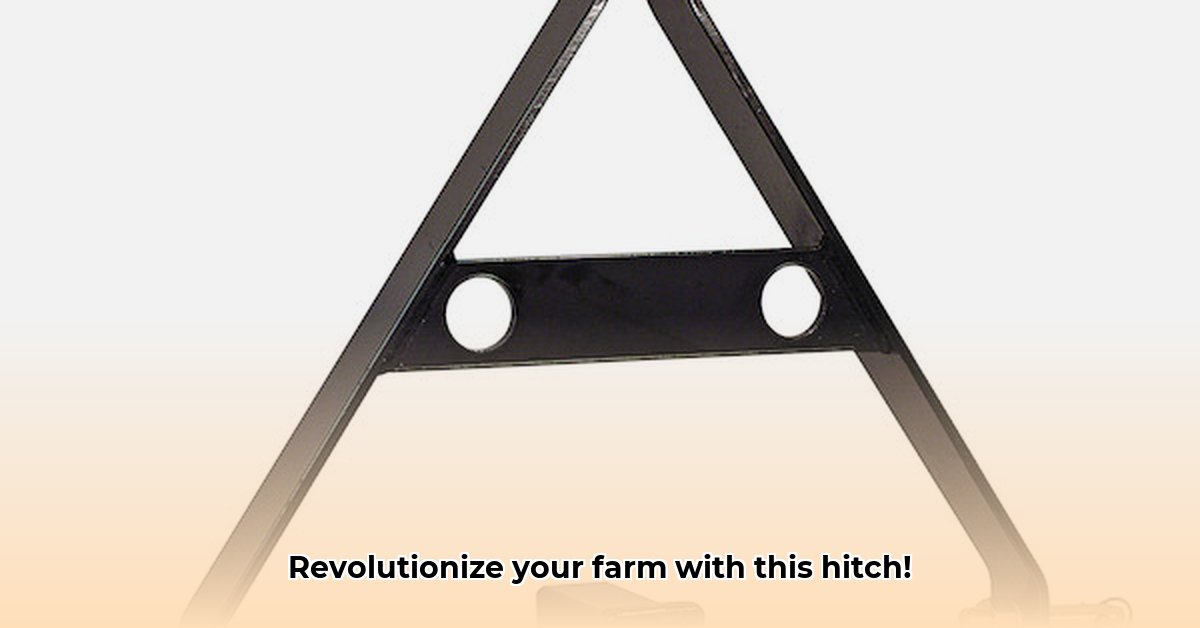
Understanding Your Tractor's 3-Point Hitch: The Foundation of Efficient Farming
Your tractor's 3-point hitch is far more than just a piece of metal; it's the vital link between your tractor's power and the implements that make your farm productive. Choosing the right hitch is crucial for efficient, cost-effective, and sustainable farming. This guide will help you navigate the selection process, ensuring you choose a hitch that optimizes your farm's performance and minimizes environmental impact. Did you know that a properly selected hitch can reduce fuel consumption by up to 15%? For more detailed information, check out this helpful resource on 3-point hitches.
Hitch Categories: Matching Capacity to Your Needs
3-point hitches are categorized (0, 1, 2, and 3) based on lifting capacity. Category 0 hitches are suitable for smaller tractors and lighter implements, often found on smaller farms or for hobby farming. Categories 1, 2, and 3 offer progressively higher lifting capacities, appropriate for larger tractors and more demanding tasks. Choosing the right category is essential; using a hitch with insufficient lifting capacity risks damage to both the hitch and your tractor. Always consult your tractor's manual to determine the compatible hitch categories.
Choosing the Right Hitch: A Step-by-Step Approach
Selecting the perfect 3-point hitch involves careful consideration of several factors:
- Consult Your Tractor's Manual: This is your first and most important step. The manual explicitly states the compatible hitch categories for your specific tractor model.
- Assess Your Farming Practices: Consider the size and weight of implements you frequently use. Do your operations require a light-duty hitch or a heavy-duty system? This impacts your choice of hitch category.
- Budgetary Considerations: Higher-capacity hitches typically come with a higher price tag. Balance your budget with your long-term needs. Investing in a properly sized hitch now can prevent costly replacements later.
- Durability and Material: Prioritize durable designs constructed from robust, long-lasting materials. This minimizes replacements and reduces waste. Consider hitches made from recyclable or sustainable materials whenever possible.
- Maintenance Accessibility: Ease of maintenance is key. Choose a hitch with readily accessible components for lubrication and inspection. This translates into less downtime and lower maintenance costs.
Maintaining Your Hitch: Preventative Measures for Longevity
Regular maintenance is vital for maximizing your hitch’s lifespan. "Preventative maintenance is key to avoiding costly repairs down the road," emphasizes Dr. Amelia Hernandez, Agricultural Engineering Professor at the University of California, Davis. Implement these practices:
- Regular Inspections: Inspect for wear, damage, or corrosion. Address any issues promptly.
- Lubrication: Keep moving parts well-lubricated to prevent seizing and ensure smooth operation.
- Cleaning: Regularly clean accumulated dirt and debris to prevent corrosion and maintain optimal function.
The 3-Point Hitch and Sustainable Farming Practices
A well-chosen 3-point hitch significantly contributes to sustainable farming. Smaller tractors paired with appropriately sized hitches consume less fuel, directly reducing your carbon footprint. The ability to use precision implements like targeted fertilizer spreaders minimizes waste and environmental impact.
Long-Term Sustainability and Future-Proofing Your Farm
Investing in a high-quality, durable hitch is a long-term investment. Consider hitches that allow for easy repair or replacement of individual components, reducing waste. Furthermore, selecting a hitch compatible with emerging technologies and precision agriculture practices ensures adaptability to future farming methods.
Stakeholder Considerations: A Holistic Perspective
The 3-point hitch impacts various stakeholders. Consider these perspectives:
| Stakeholder | Key Considerations |
|---|---|
| Small-scale farmers | Affordability, reliability, ease of maintenance |
| Medium/Large-scale farmers | Efficiency, minimizing downtime, and precision agriculture integration |
| Manufacturers | Sustainable materials, durable design, ease of repair |
| Government Agencies | Subsidies, education programs, support for sustainable tech |
Remember, your 3-point hitch is a crucial investment. Careful planning and diligent maintenance contribute to a more efficient, cost-effective, and environmentally responsible farm.